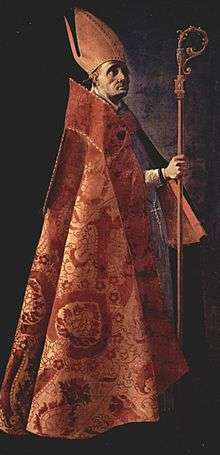374
| Millennium: | 1st millennium |
|---|---|
| Centuries: | 3rd century · 4th century · 5th century |
| Decades: | 340s · 350s · 360s · 370s · 380s · 390s · 400s |
| Years: | 371 · 372 · 373 · 374 · 375 · 376 · 377 |
| 374 by topic | |
| Politics | |
| State leaders – Sovereign states | |
| Birth and death categories | |
| Births – Deaths | |
| Establishment and disestablishment categories | |
| Establishments – Disestablishments | |
| Gregorian calendar | 374 CCCLXXIV |
| Ab urbe condita | 1127 |
| Assyrian calendar | 5124 |
| Bengali calendar | −219 |
| Berber calendar | 1324 |
| Buddhist calendar | 918 |
| Burmese calendar | −264 |
| Byzantine calendar | 5882–5883 |
| Chinese calendar | 癸酉年 (Water Rooster) 3070 or 3010 — to — 甲戌年 (Wood Dog) 3071 or 3011 |
| Coptic calendar | 90–91 |
| Discordian calendar | 1540 |
| Ethiopian calendar | 366–367 |
| Hebrew calendar | 4134–4135 |
| Hindu calendars | |
| - Vikram Samvat | 430–431 |
| - Shaka Samvat | 295–296 |
| - Kali Yuga | 3474–3475 |
| Holocene calendar | 10374 |
| Iranian calendar | 248 BP – 247 BP |
| Islamic calendar | 256 BH – 255 BH |
| Javanese calendar | 256–257 |
| Julian calendar | 374 CCCLXXIV |
| Korean calendar | 2707 |
| Minguo calendar | 1538 before ROC 民前1538年 |
| Nanakshahi calendar | −1094 |
| Seleucid era | 685/686 AG |
| Thai solar calendar | 916–917 |
| Wikimedia Commons has media related to 374. |
Year 374 (CCCLXXIV) was a common year starting on Wednesday (link will display the full calendar) of the Julian calendar. At the time, it was known as the Year of the Consulship of Augustus and Equitius (or, less frequently, year 1127 Ab urbe condita). The denomination 374 for this year has been used since the early medieval period, when the Anno Domini calendar era became the prevalent method in Europe for naming years.
Events
By place
Roman Empire
- The Quadi cross the Danube and begin ravaging Pannonia. They avoid the fortified cities, and plunder the unprotected countryside.[1]
America
- May 4 – Spearthrower Owl ascends to the throne and becomes ruler of Teotihuacan (Mexico).[2]
By topic
Religion
- December 7 – The people of Milan astonish Ambrosius, governor of Aemilia-Liguria, by acclaiming him bishop. He is the second son of the former praetorian prefect of Gaul, and becomes a creative thinker whose ideas will provide the paradigm for medieval church-state relations.[3]
Births
- Fu Liang, official of the Liu Song Dynasty (d. 426)[4]
- Gwanggaeto the Great, king of Goguryeo (d. 413)[5]
Deaths
References
- 1 2 Cameron, Averil; Garnsey, Peter (1998). The late Empire, A.D. 337–425 (2nd ed.). Cambridge University Press. p. 85. ISBN 978-0-521-30200-5.
- ↑ Martin, Simon; Grube, Nikolai (2008). Chronicle of the Maya kings and queens: deciphering the dynasties of the ancient Maya (2nd ed.). Thames & Hudson. p. 31. ISBN 978-0-500-28726-2.
- ↑ Guiley, Rosemary (2001). The encyclopedia of saints. Infobase Publishing. p. 14. ISBN 978-0-8160-4134-3.
- ↑ Hyŏngnyŏn, Chŏng; Buzo, Adrian; Prince, Tony (1993). Kyunyŏ-jŏn: the life, times and songs of a tenth century Korean monk. Wild Peony. p. 52. ISBN 978-0-646-14772-7.
- ↑ McIlwraith, C. Wayne; Rollin, Bernard E. (2011). Equine Welfare. John Wiley & Sons. p. 47. ISBN 978-1-4051-8763-3.
- ↑ Van Dam, Raymond (2003). Families and friends in late Roman Cappadocia. University of Pennsylvania Press. p. 200. ISBN 978-0-8122-3712-2.
This article is issued from Wikipedia - version of the 9/21/2016. The text is available under the Creative Commons Attribution/Share Alike but additional terms may apply for the media files.
